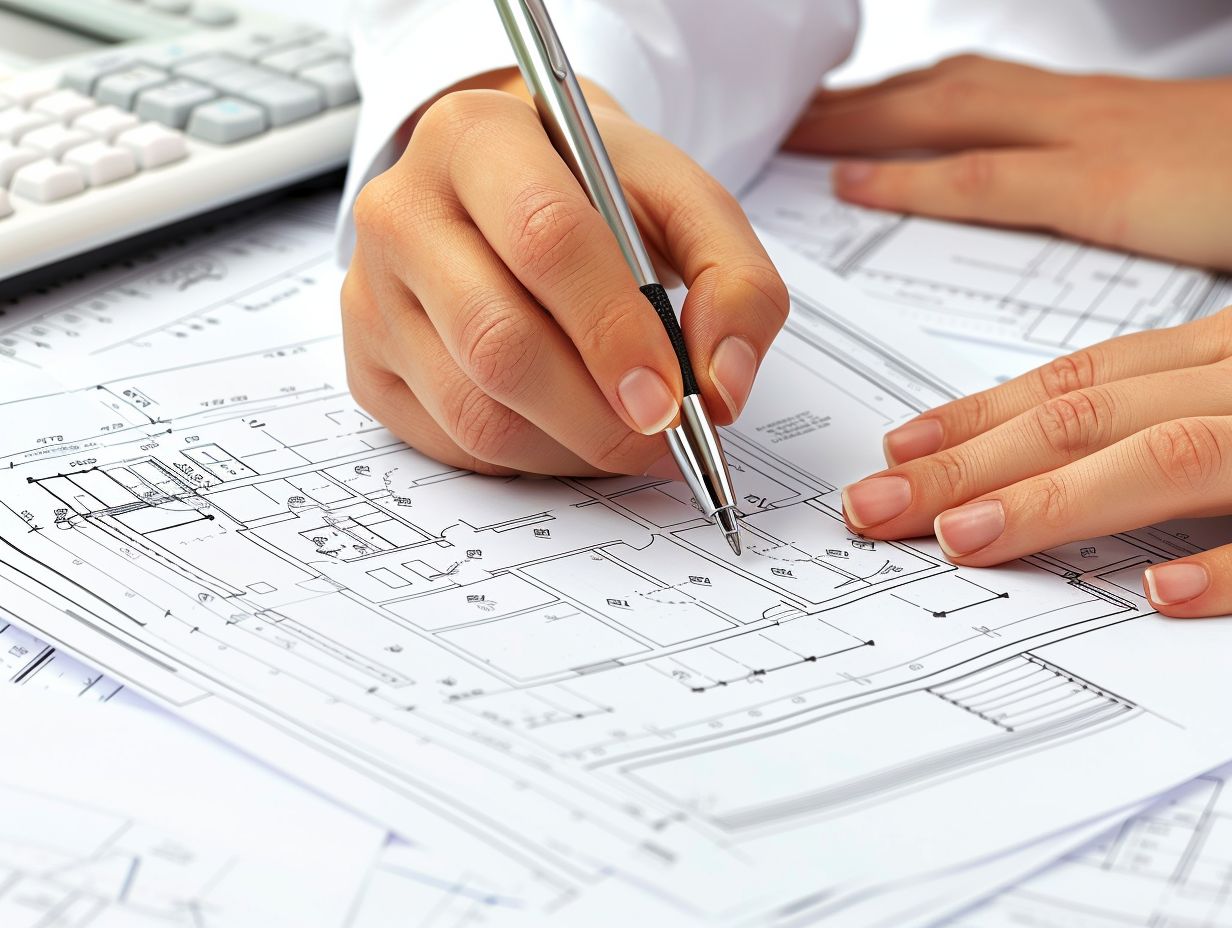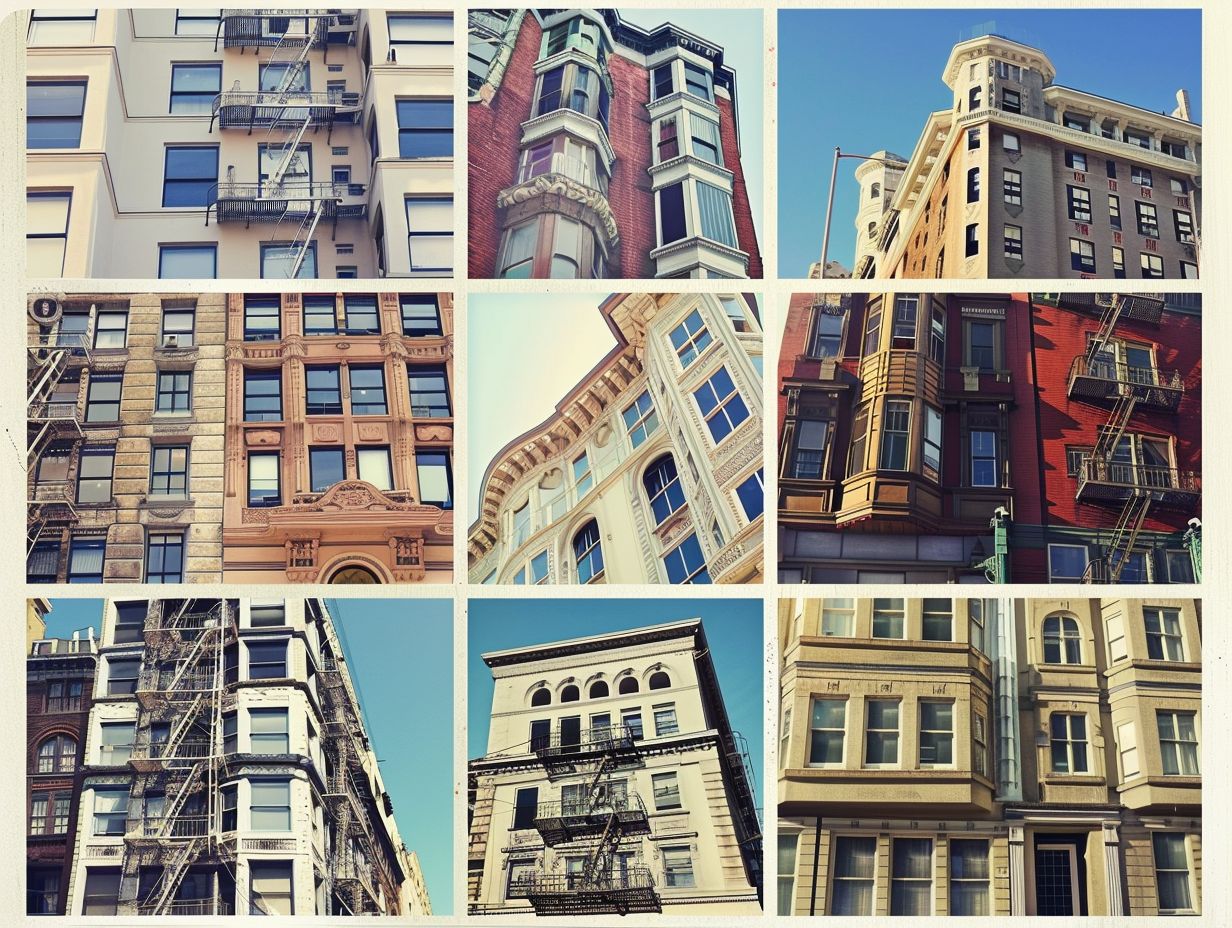
Earthquake-Proof Structures in San Francisco: Building for Safety
In earthquake-prone regions like San Francisco, the importance of earthquake-proof structures cannot be overstated. The threat of seismic activity looms large, making it crucial for buildings and infrastructure to be designed and constructed with the resilience to withstand the powerful forces of earthquakes.
From the historical context of earthquakes in San Francisco to the key features and design principles of earthquake-proof structures, this comprehensive article aims to provide insights into the world of seismic-resistant construction. We will delve into the materials, techniques, and safety measures employed in the construction of earthquake-proof structures, with a specific focus on notable examples in San Francisco such as the Transamerica Pyramid, San Francisco City Hall, and the iconic Golden Gate Bridge.
We will explore the safety measures in place for earthquake-proof structures, and offer practical tips for individuals to prepare for earthquakes in San Francisco. Join us as we uncover the intricacies of building for safety in earthquake-prone regions.
What Are Earthquake-Proof Structures?
Earthquake-proof structures are buildings and other architectural formations that are designed and constructed to withstand the damaging effects of earthquakes and seismic activity.
They are engineered with specific design principles and construction techniques to ensure resilience against the powerful forces unleashed by seismic events. The purpose of earthquake-proof structures is to minimize the risk of structural failure, thereby protecting lives and minimizing property damage during earthquakes.
These structures often incorporate innovative technologies, such as base isolators, dampers, and flexible building materials, to enhance their seismic resistance. Through careful consideration of ground motion, building materials, and structural connections, engineers strive to create buildings that can flex and absorb seismic energy without collapsing.
What Are the Key Features of Earthquake-Proof Structures?
Key features of earthquake-proof structures include their seismic resistance, structural stability, performance under seismic forces, risk mitigation capabilities, and ability to minimize the impact of earthquakes on the built environment.
These structures are designed to withstand the intense shaking and ground motion caused by earthquakes. Their materials and construction methods are carefully selected to ensure flexibility and durability, allowing them to dissipate earthquake energy without compromising their integrity. Advanced engineering techniques such as base isolation and damping systems are integrated to enhance their seismic performance.
With a focus on enhancing the safety of occupants and minimizing damage to the infrastructure, earthquake-proof structures play a crucial role in mitigating the devastating effects of seismic events.
Why Is It Important to Have Earthquake-Proof Structures in San Francisco?
Earthquake-proof structures are crucial in San Francisco due to the city’s location in a seismically active region, making it susceptible to earthquake hazards and emphasizing the need for seismic-resistant buildings to ensure public safety and mitigate the risks associated with seismic events.
These structures are designed to withstand the unpredictable forces of an earthquake, incorporating advanced engineering techniques such as base isolation, damping systems, and flexible building materials. The implementation of strict building codes and standards, along with ongoing research and innovation in seismic-resistant construction, plays a vital role in enhancing the city’s resilience to earthquakes. The adoption of these measures not only safeguards lives but also protects critical infrastructure, minimizing the potential impact of seismic events on the urban environment.
What Is the History of Earthquakes in San Francisco?
San Francisco has a long history of seismic activity and devastating earthquakes, with notable events such as the 1906 San Francisco earthquake causing widespread damage and significant impact on the city’s infrastructure and communities.
The aftermath of the 1906 quake led to major urban reconstruction and reformation of building codes to improve the city’s resilience against future seismic events. Subsequent earthquakes, like the 1989 Loma Prieta earthquake, have also left a lasting imprint on the region, reshaping infrastructure and transportation systems.
San Francisco continues to actively prepare for seismic risks, recognizing the importance of earthquake preparedness and mitigation.
What Are the Potential Risks of Earthquakes in San Francisco?
San Francisco faces various potential risks from earthquakes, including seismic hazards, structural vulnerability of buildings, and the potential for widespread damage and disruption to critical infrastructure and lifeline systems.
These seismic hazards are a result of the city’s location along the San Andreas Fault, exposing it to the potential for intense ground shaking and destructive seismic waves. The structural vulnerability of buildings in the region, particularly older structures constructed before modern building codes, further exacerbates the risk of collapse and widespread damage.
Such events could have a significant impact on critical infrastructure and lifeline systems, including water supply, transportation networks, and emergency response services, potentially leading to extended periods of disruption and recovery efforts.
How Are Earthquake-Proof Structures Designed and Built?
The design and construction of earthquake-proof structures involve a multidisciplinary approach, integrating principles of seismic engineering, retrofitting techniques, foundation reinforcement, and advanced construction methods to enhance the structural integrity and seismic resistance of buildings.
Emphasizing a collaborative effort between structural engineers, architects, geotechnical experts, and construction professionals is crucial in identifying potential vulnerabilities and implementing solutions to mitigate seismic hazards. Retrofitting existing structures often involves incorporating innovative materials and technologies to strengthen the building’s capacity to withstand ground motions.
Foundation reinforcement plays a critical role in redistributing loads and anchoring the structure securely. Advanced construction methods, such as base isolation and damping systems, further minimize the impact of seismic forces, ensuring the safety and resilience of these structures.
What Materials Are Used in Earthquake-Proof Structures?
Earthquake-proof structures utilize a variety of materials that are specifically chosen for their seismic resistance and reinforcement properties, including advanced composites, high-strength steel, and innovative concrete formulations designed to enhance the structural performance and seismic resilience of buildings.
These materials are crucial for withstanding the powerful forces exerted during an earthquake. Advanced composites, such as carbon fiber reinforced polymers (CFRP), provide exceptional strength and flexibility, enabling structures to better resist seismic movements. High-strength steel offers exceptional ductility and tensile strength, while innovative concrete formulations incorporate fibers and additives to improve their ability to withstand seismic events. By integrating these materials, engineers can construct buildings that are better equipped to withstand the impact of earthquakes and protect the safety of occupants.
What Are the Techniques Used in Earthquake-Proof Construction?
Earthquake-proof construction employs innovative techniques such as seismic retrofitting, base isolation, and advanced structural dynamics analysis, alongside state-of-the-art technologies, to enhance building resilience and seismic performance in the event of an earthquake.
Seismic retrofitting involves strengthening existing structures by adding additional lateral support, dampers, and cross-bracing to mitigate the effects of seismic forces. Innovations such as using flexible building materials and new construction methods are also being incorporated, while technology-driven approaches encompass real-time monitoring systems, AI-driven risk assessment, and 3D printing for resilient infrastructure. These advances in earthquake-proof construction are crucial for creating safer and more resilient built environments in earthquake-prone regions around the world.
What Are Some Examples of Earthquake-Proof Structures in San Francisco?
San Francisco boasts several iconic earthquake-proof structures, including the Transamerica Pyramid, San Francisco City Hall, and the Golden Gate Bridge, each showcasing innovative seismic design and construction techniques to mitigate earthquake risks.
These structures stand as remarkable feats of engineering, with the Transamerica Pyramid’s tapered shape reducing wind forces and seismic loads, the San Francisco City Hall’s reinforced steel frame providing flexibility during tremors, and the Golden Gate Bridge’s advanced suspension system allowing it to withstand powerful ground movements.
Each of these structures exemplifies the importance of integrating seismic-resilient features into architectural masterpieces, setting a precedent for earthquake-proof construction worldwide.
Transamerica Pyramid
The Transamerica Pyramid in San Francisco is a prominent example of an earthquake-proof structure, renowned for its distinctive design and advanced seismic-resistant features that safeguard the building against earthquake impacts.
Its construction incorporates innovative technologies such as a tuned mass damper system and a flexible design that allows the building to sway without causing structural damage. The pyramid’s unique triangular shape also contributes to its seismic stability by reducing wind resistance and distributing forces more evenly.
The building’s foundation is engineered to withstand seismic activity, utilizing deep piles anchored into dense bedrock to minimize the effects of ground shaking. These features collectively make the Transamerica Pyramid a pioneering accomplishment in architectural and seismic engineering, setting a benchmark for earthquake-resistant structures worldwide.
San Francisco City Hall
San Francisco City Hall stands as a testament to earthquake-proof construction, incorporating resilient design elements and structural innovations to ensure its stability and safety in the event of seismic activity.
The building’s robust foundation and base isolation system help mitigate the impact of ground motion during earthquakes, while its flexible architectural design allows for the absorption and redistribution of seismic forces. Advanced materials, such as reinforced concrete and steel, have been strategically integrated into the structure, enhancing its overall resilience. These features collectively contribute to the City Hall’s exceptional seismic safety standards, serving as a model for urban architecture in earthquake-prone regions.
Golden Gate Bridge
The Golden Gate Bridge exemplifies earthquake-resistant engineering, featuring flexible design elements and innovative seismic retrofitting technologies that enable the bridge to withstand the forces of seismic events, ensuring its structural integrity and longevity.
The bridge’s seismic resilience is achieved through a combination of measures, including the use of advanced materials like flexible steel and concrete, as well as cutting-edge damping systems. These elements allow the bridge to dissipate and absorb seismic energy, reducing the impact of ground motion.
The bridge’s innovative design incorporates expansion joints and bearings that provide crucial flexibility during seismic events, allowing the structure to move and adapt to the forces exerted, effectively minimizing damage and ensuring the safety of the bridge and its users.
What Are the Safety Measures in Place for Earthquake-Proof Structures in San Francisco?
Safety measures for earthquake-proof structures in San Francisco encompass regular inspections, proactive retrofitting of older buildings, and comprehensive emergency preparedness plans to ensure public safety and resilience in the face of seismic events.
These safety measures aim to mitigate the potential impact of earthquakes on the city’s infrastructure. Regular inspections are conducted to assess the structural integrity of buildings and identify any vulnerabilities that require immediate attention. Retrofitting initiatives focus on strengthening older structures to meet modern seismic standards, reducing the risk of collapse during an earthquake.
The city’s emergency preparedness plans include training programs, evacuation drills, and communication strategies to effectively respond to and manage earthquake-related emergencies.
Regular Inspections and Maintenance
Regular inspections and proactive maintenance programs are essential for ensuring the structural integrity and public safety of earthquake-proof buildings in San Francisco, allowing for timely identification and mitigation of potential vulnerabilities.
These inspections and maintenance programs play a critical role in safeguarding the structures and inhabitants from the devastating impact of seismic activities. By monitoring crucial structural elements such as foundation, connections, and support systems, engineers and maintenance teams can address any signs of wear and tear, corrosion, or structural weaknesses. This proactive approach not only enhances the resilience of buildings but also ensures the continuous functionality of safety measures, such as emergency exits, fire suppression systems, and evacuation routes.
Ultimately, these measures contribute to creating a safer urban environment for the city’s residents and visitors.
Emergency Preparedness Plans
Robust emergency preparedness plans form a critical component of safety measures for earthquake-proof structures in San Francisco, focusing on risk mitigation, rapid response protocols, and community resilience in the aftermath of seismic events.
These plans are designed to minimize the impact of earthquakes on buildings and infrastructure, ensuring that communities can swiftly recover from the devastating effects. Through proactive measures such as reinforcing building structures, establishing evacuation routes, and training residents in emergency protocols, cities like San Francisco aim to enhance their resilience against seismic activities.
Community awareness programs and drills play a vital role in educating and preparing the population for potential earthquake scenarios, fostering a culture of preparedness and unity during times of crisis.
Retrofitting of Older Buildings
Retrofitting initiatives aimed at older buildings in San Francisco play a vital role in enhancing their seismic resilience and aligning with contemporary building codes, ensuring their safety and compliance with seismic design criteria.
This critical process involves reinforcing the structural integrity of these buildings through the installation of seismic retrofit systems, such as base isolators and energy dissipation devices, to minimize the impact of potential seismic events. By integrating innovative seismic design solutions and technologies, these retrofitted buildings are better prepared to withstand earthquake forces, thereby safeguarding the occupants and preserving the architectural heritage of San Francisco.
The significance of these efforts extends beyond immediate safety concerns, contributing to the overall resilience of the city’s infrastructure and the well-being of its communities.
How Can Individuals Prepare for Earthquakes in San Francisco?
Individuals in San Francisco can prepare for earthquakes by creating comprehensive emergency plans, assembling essential emergency kits, and familiarizing themselves with proper safety protocols and evacuation planning to ensure their well-being during seismic events.
This preparation can involve creating a communication plan to ensure everyone knows how to contact each other in the event of an earthquake. Individuals should practice “Drop, Cover, and Hold On” drills to be ready in case of a sudden tremor.
Identifying safe spots in the home or workplace and understanding how to turn off utilities can also mitigate potential dangers. Staying informed about local response plans and community resources can further enhance readiness and resilience in the face of seismic activity.
Create an Emergency Plan
Creating a comprehensive emergency plan is a crucial step for individuals in San Francisco to prepare for earthquakes, encompassing communication strategies, emergency contacts, and designated assembly points to ensure safety and coordination during seismic events.
This approach involves identifying reliable communication channels such as text messaging, social media, and local news sources to stay informed about the disaster. Having emergency contacts readily accessible, including family members, neighbors, and local authorities, is vital for swift assistance and support.
Coordination measures include practicing evacuation routes, establishing meetup locations, and being aware of community shelters. Incorporating these elements into the emergency plan can significantly enhance readiness and resilience in the event of an earthquake.
Prepare an Emergency Kit
Assembling an emergency kit with essential supplies, including food, water, first aid materials, and communication devices, is imperative for individuals in San Francisco to be well-prepared for earthquakes and potential disruptions to regular services.
In addition to these essentials, it’s crucial to include:
- A flashlight with extra batteries.
- A multi-tool.
- Important documents such as identification, insurance papers, and emergency contacts.
- A battery-powered or hand-crank radio to stay updated on the situation.
- Personal hygiene items, blankets, and a whistle for signaling for help.
Organizing these items in a waterproof, easy-to-carry container ensures quick accessibility during any emergency.
Know How to React During an Earthquake
Familiarizing oneself with proper safety protocols and knowing how to react during an earthquake, including seeking cover, staying away from hazards, and following evacuation procedures, is essential for individuals in San Francisco to prioritize their safety and well-being.
It is crucial to stay alert to any potential risks, such as falling objects or structural damage, and take prompt action to secure oneself. Identifying sturdy furniture or structures to take cover under can provide protection from debris and collapsing materials. Remaining calm and helping others, especially the elderly and individuals with disabilities, during the evacuation process can make a significant difference in ensuring everyone’s safety during and after an earthquake.




No Comments